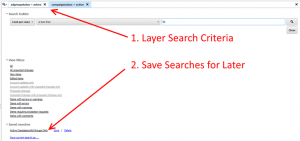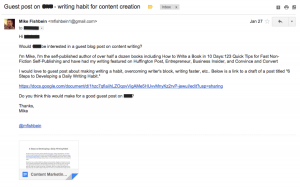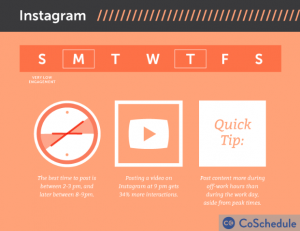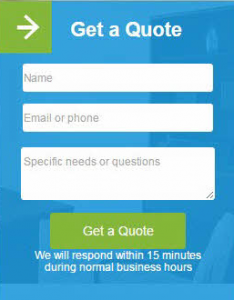Columnist Ratko Vidakovic explains why marketers need to leverage the open auction of the public RTB marketplace in order to obtain maximum reach and total programmatic efficiency.

We have finally arrived at the last installment of our four-part series on navigating the modern ad tech stack. We previously covered direct orders, programmatic direct and private marketplaces.
If you recall, we learned that private marketplaces enable publishers and advertisers to create pockets of “privileged” inventory that get transacted before ever entering the public marketplace. It gives both parties a higher degree of predictability around price and delivery, both of which are uncertain in an open marketplace.
The challenge with private marketplace transactions, though, is that there still remains a substantial amount of manual human work required to execute them. And for publishers that have dozens of such deals happening simultaneously, it can feel like “death by a thousand cuts.” Private marketplaces are also centered primarily on a publisher-focused buying strategy, and they lack the internet-wide scale to execute effective keyword or audience-based targeting strategies.
In order to maximize the reach of data-driven, audience-based campaigns –- and, simultaneously, to do so in a completely automated manner — advertisers need to leverage the open auction of the public real-time bidding (RTB) marketplace.
We briefly covered RTB technology when we examined private marketplaces. In this article, we will continue to explore the RTB world by focusing on the open auction or public marketplace. We’ll examine the benefits and drawbacks for both marketers and publishers and see how this method of buying media fits into the bigger picture.
How RTB Technology Works
According to estimates from eMarketer, ad spending via public or open RTB auction will surpass $8 billion in 2015, representing roughly 77 percent of all RTB-based digital display ad spending. It’s also the next and final level in the ad server “waterfall” (shown in the illustration below).

How modern publishers typically organize their ad-serving stack.
As the name implies, the open auction of the public RTB marketplace is powered by the OpenRTB protocol and was the original use case upon which the standard was developed. It allowed publishers to put their unsold inventory into a public auction, allowing virtually any advertiser to bid on it. This allowed publishers to capture the most demand and maximize the yield of their unsold inventory.
At the heart of the RTB marketplace is the second-price auction. In a second-price auction, the highest bidder only pays $0.01 more than the second-highest bidder. This creates a very efficient marketplace, as advertisers are free to bid the most that the impression is worth to them, without fear of bidding more than they need to. But it also adds a great deal of uncertainty for all parties, since many things become unpredictable in such a dynamic environment.

How the second-price auction of the RTB marketplace works.
In most cases, publishers partner with a supply-side platform (SSP) that enables them to expose their inventory to the RTB marketplace. They do so, rather than connect directly to a DSP, because SSPs connect to numerous partners that could potentially purchase this inventory. This increases the likelihood that a given impression will be filled, presumably netting more for the advertiser than going direct to the demand providers.
The way publishers typically structure this is by adding the SSP to their primary ad server, but at the bottom of the “waterfall” (i.e., at the lowest priority), so that only unsold inventory makes its way there. The consequences of such implementations are important for advertisers to understand.
Advertiser Benefits
Why would an advertiser want to purchase media through the open RTB marketplace?
- Complete Automation: The beauty of the open RTB marketplace is that it doesn’t necessarily require any human interaction to launch a campaign. An advertiser can create and launch a campaign using a demand-side platform (DSP) and, barring any ad quality or technical complications, have it active without ever having to speak to a human being.
- Maximum Reach: Another characteristic of the RTB marketplace is that it provides unprecedented scale and reach by virtue of having tens of thousands of publishers participating. The last time I checked, there were upwards of 100,000 publishers available via RTB (and that’s after culling smaller publishers with fewer than 20,000 impressions per day).
- Data-Driven Targeting: By having such reach at their disposal, marketers can fully leverage audience data (which I sometimes refer to as the “fuel” that makes RTB so special) to power the targeting of campaigns. In other words, the RTB ecosystem enables marketers to target specific audiences made up of individuals that meet a certain criteria and to surgically place the most relevant ads in front of them.
- Efficient Pricing: One of the most notable differences between RTB and direct orders is the move from bulk pricing (CPM) to the purchase of individual impressions (eCPM). Since advertisers are now only paying for the impressions that match their specific criteria, such as target audience, ad spend is far more efficient, and waste is minimized.
- Highly Accessible: In the world of media buying, it can be hard to get a publisher’s attention without having “clout” or deep pockets. Publishers are running a business, so naturally, they will focus on the deals that yield the highest returns. With RTB, however, publishers can effectively cater to smaller advertisers using the power of automation, essentially allowing advertisers of all sizes to purchase their inventory in a low-touch manner.
Advertiser Drawbacks
From an advertiser perspective, there are also tradeoffs to the public RTB marketplace:
- No Publisher Relationship: Having relationships with key publishers can be very strategic in the long term for many businesses. But with RTB, there is virtually no contact between the advertiser and the publisher. The publisher may see the advertiser’s name show up in revenue reports, but unless either party takes action, no rapport or relationship equity will ever develop. But such history can be valuable in the future if the pursuit of private marketplace deals or direct orders becomes important.
- Lowest Priority: As a result of the way most publishers implement RTB technology in their overall ad-serving stacks, campaigns that are served via RTB almost always get served last. In other words, they basically get “last look” at inventory, which means higher session depths. For a deeper explanation of session depths, I recommend revisiting a previous article where we explored how inventory is valued.
- Unpredictable Delivery: Having the lowest priority in the ad-serving waterfall has another consequence: inventory volumes become unpredictable. First of all, because of the auction structure of RTB, there is always the possibility of being outbid by a competing advertiser. And if you choose to compete on price, assuming budgets remain static, the number of impressions that will be delivered must necessarily change. Furthermore, as we previously discussed, there is a relationship between the direct orders a publisher receives and the amount of available inventory in the RTB ecosystem, making it practically impossible to either guarantee or reserve inventory in advance using RTB.
Closing Thoughts
There is no question that the open auction of the public RTB marketplace has been a boon to advertisers in recent years. In fact, the recent study published by the IAB on programmatic advertising confirms this point. Revenue from programmatic advertising made up 52% of all digital display ad revenue in 2014, more than double its previous share (23%) in 2013.
The kicker, though, is that 70% was made up of open auction RTB transactions. This lion’s share of the programmatic market makes sense, because the open auction is really the only way to achieve the scale needed to properly execute audience-based campaigns. It’s also the only programmatic buying method available today that fulfills the promise of complete automation and efficiency.
Another great thing about the public RTB marketplace is that it’s open to marketers of all sizes. The clout that large advertisers had as a result of larger buys is nullified, creating greater equality for buyers of all sizes and making buying skill much more important than economies of scale. There are tradeoffs, of course, but there are also options to mitigate those tradeoffs by going “up the waterfall,” so to speak, and working more closely with the publisher.
But despite this rapid growth, there are challenges ahead for marketers who participate in the programmatic advertising and RTB market.
First, the industry landscape is quite complex, and demystifying it is critical to fulfilling its potential. And while understanding the landscape is important, understanding the programmatic buying tech itself is just as important for media buyers and campaign analysts. Furthermore, marketer trust needs to be fostered by addressing fraud, viewability and brand safety concerns. And lastly, with so many vendors in the ecosystem, consolidation needs to take place to help drive operational efficiencies and confidence in the overall value chain.
Looking Ahead
Since starting this series, new developments in the way publishers structure and monetize their inventory have emerged. Most interesting is the advent of what is being referred to as “header bidding.” It’s basically a way for publishers to allow advertisers to cherry-pick impressions right from the top of the ad-serving waterfall, even before direct orders are fulfilled. This raises some important issues, and it is something I plan to examine in more detail in a future column.
I hope you have found this series informative. If you have any questions or feedback, please contact me directly or leave them in the comments.
See other installments in this series:
- Navigating The Modern Ad Serving Stack, Part 1: Direct Orders
- Navigating The Modern Ad Serving Stack, Part 2: Programmatic Direct
- Navigating The Modern Ad Serving Stack, Part 3: Private Marketplaces
Some opinions expressed in this article may be those of a guest author and not necessarily Marketing Land. Staff authors are listed here.
(Some images used under license from Shutterstock.com.)
Marketing Land – Internet Marketing News, Strategies & Tips
(228)









